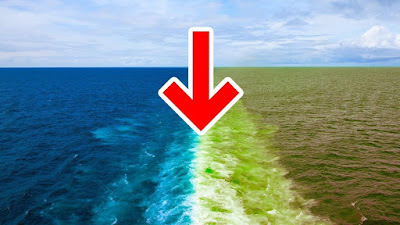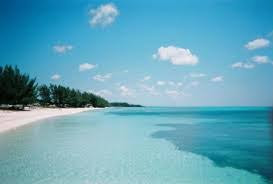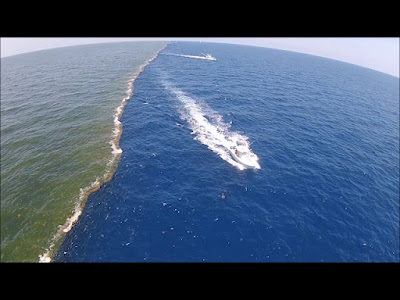Водные объекты, которые не соответствуют требованиям:-
 |
| Водные объекты |
At the point when you take a gander at the oceans and seas on the guide, you may feel that they simply stream into one another. It appears as though there’s just a single large sea, and individuals just gave various names to its parts. All things considered, you’ll be flabbergasted at how clear the outskirts between them are! The fringe between two Water Bodies the Pacific and Atlantic seas resembles a line between 2 universes. It looks as though the two seas meet at an undetectable divider which doesn’t let them stream into one another and blend their waters. Why in the world does it occur? We know without a doubt there is no undetectable divider inside, and water will be water. What could meddle with its blending? Indeed water in Water Bodies can be diverse as well. The Atlantic and the Pacific seas have the distinctive thickness and compound make-up, the degree of saltiness and different characteristics. One can see by their shading that they are a long way from being the equivalent. The fringes between two water bodies with various physical and organic attributes are known as sea clines. Haloclines – fringes between waters with various saltiness – are the most terrific, and this is the thing that we see when the Atlantic and the Pacific seas meet. The acclaimed pilgrim Jacques Cousteau discovered this when he was profound making a plunge the Strait of Gibraltar. The layers of water with various saltiness appeared as though they were partitioned with a straightforward film, and each layer had its own widely varied vegetation.
Галоклины
 |
| Водные объекты |
Haloclines show up when water in one sea or ocean is, in any event, multiple times saltier than in the other. You can make a halocline at home on the off chance that you pour some seawater or shaded salty water in a glass and afterwards include some new water top of it. The main contrast is that your halocline will be flat, and sea haloclines are vertical. In the event that you recollect two or three essential things from material science, you may contend that a denser fluid ought to at last end up lower and less thick higher. In the event that that was genuine, the fringe between the two seas would dislike a vertical line yet as a flat one, and the distinction between their saltiness would turn out to be more subtle the closer they found a good pace. So for what reason doesn’t it occur here? All things considered, first, the distinction in the thickness of water of the two seas isn’t that incredible for one of them to get down and the other to ascend. But then it’s sufficient not to allow them to blend. All things considered, another explanation is latency. One of the inertial powers known as Coriolis power impacts objects when they are moving in the arrangement of tomahawks which, in its turn, is moving as well.
In more straightforward words, the Earth is moving, and all the moving articles on it will be followed up on by Coriolis power, going astray from their course. Therefore, the articles on the Earth surface don’t move straight on yet go astray in clockwise request in the Northern half of the globe and counterclockwise in the Southern. Yet, the Earth is moving gradually, it takes the planet an entire day to make a round trip around its hub. That is the reason the Coriolis impact gets evident just a prolonged stretch of time interims: with tornados or sea streams. What’s more, this is the reason the heading of streams in the Atlantic and Pacific seas is extraordinary. It additionally doesn’t allow them to blend. Another significant contrast between the two seas’ water is the quality of atoms’ association or surface rigidity. On account of this quality, particles of an issue hold to one another. The two seas have a very surprising surface elasticity, and it additionally doesn’t allow them to blend.
Possibly they could step by step begin blending in with time, however as the streams in them have inverse headings, they simply don’t have the opportunity to do this. We believe that it’s simply water in the two seas( water bodies ), yet its different particles meet for only a short minute and afterwards become really excited with the sea stream. Wouldn’t you say, however, that solitary the Atlantic and Pacific seas don’t manage everything well with one another! There are a ton of spots on the planet where water in the two oceans or streams doesn’t blend. There are additionally thermoclines – outskirts between water of various temperatures, similar to the warm water of Gulf Stream and a lot colder North Atlantic Ocean. Chemoclines are the most astounding ones. These are fringes between waters having diverse microclimate and substance make-up. The Sargasso Sea is the greatest and most generally known chemocline. It is an ocean inside the Atlantic Ocean which has no shores yet you have zero chance not to see it. We should view the other most marvellous clines on earth.
Водные объекты Которые не встречаются друг с другом:.
 |
| Водные объекты |
#1. The North and Baltic Seas These two oceans meet close to the Danish city of Skagen. The water in them doesn’t blend as a result of various thickness. Now and then you can see the rushes of the 2 oceans conflict into one another, making froth. But then their water blends steadily, that is the reason the Baltic Sea is marginally saline. On the off chance that there had been no water coming to it from the North Sea, it would’ve been a colossal freshwater lake.
#2. The Mediterranean Sea and the Atlantic Ocean. They meet at the Strait of Gibraltar and have an alternate thickness and saltiness, so their water doesn’t blend as well.#3. Карибское море и Атлантический океан, где они встречаются, находятся недалеко от Антильских островов и выглядят так, будто кто-то раскрасил воду в разные оттенки синего. Где-то в другом месте этих двух точек соприкосновения находится остров Элеутера на Багамах. Вода в Карибском море бирюзовая, а в Атлантическом океане - тускло-голубая.
#4. Река Суринам и Атлантический океан встречаются недалеко от города Парамарибо в Южной Америке.
 |
| Водные объекты |
#5. Река Уругвай и ее приток Эти две реки встречаются в районе Мисьонес в Аргентине. Одна из них очищена для использования в садоводстве, а другая становится практически красной в свете верхнего слоя почвы в бурные сезоны.
#6. The Rio Negro and Solimões Rivers (some portion of the Amazon River) 6 miles from Manaus in Brazil, Rio Negro and Solimoes waterways low into one another yet don’t blend for about 2.5 miles. The Rio Negro is dim and Solimoes – light, they have an alternate temperature and speed of the stream.
#7. Мозель и Рейн Они встречаются в Кобленце, Германия. Рейн имеет более светлую воду, а Мозель - более темную.
#8. Илц, Дунай и Инн Пересечение этих трех потоков находится в Пассау, Германия. Илц - это небольшой горный поток с одной стороны, Дунай - в центре, а Инн - светлый поток с другой стороны. Гостиница здесь более обширна, чем Дунай, но в то же время является его притоком.
#9. Реки Алакнанда и Бхагиратхи встречаются в Индии. Алакнанда - тусклая, а Бхагиратхи - светлая.
#10. Irtysh and Ulba stream into one another in Kazakhstan close to the city whose name you’ll always be unable to articulate, nor will I. You give it a shot. (Ust’- Kamenogorsk.) The Irtysh has clean water and Ulba – shady.
 |
| Водные объекты |
#11. Реки Цзялин и Янцзы пересекаются в Чунцине, Китай. Цзялин - безупречная, а Янцзы - темного цвета.
#12. Иртыш и Омь Эти две водные артерии впадают друг в друга в Омске, Россия. Иртыш - тенистый, а Омь - чистая и прямая.
#13. Chuya and Katun waterways(water bodies) meet in the Altai Republic, Russia. The water of the Chuya has an abnormal shady white shading here and looks thick and thick. Katun is spotless and turquoise. Streaming into one another they structure a solitary two-hued stream that doesn’t blend for quite a while.
#14. The Green and Colorado waterways. The spot of their intersection in Canyonlands National Park in Utah, USA. Colorado is darker and Green is – that’s right, green. The passages of these streams experience rocks with various synthetic make-up, (water bodies that are the reason they have such a major difference of hues.
#15. The Rhone and Arve waterways They stream into one another in Geneva, Switzerland. The Rhone is an unadulterated waterway that streams out of the pool of Geneva, the Arve is overcast as it gets its water from icy masses of the Chamonix valley. Anyway, the water you consider this water? Obviously it’s a terrible joke, similar to a ton of my awful ways to express those waterway names.
Для получения дополнительной информации посетите Знает набор







